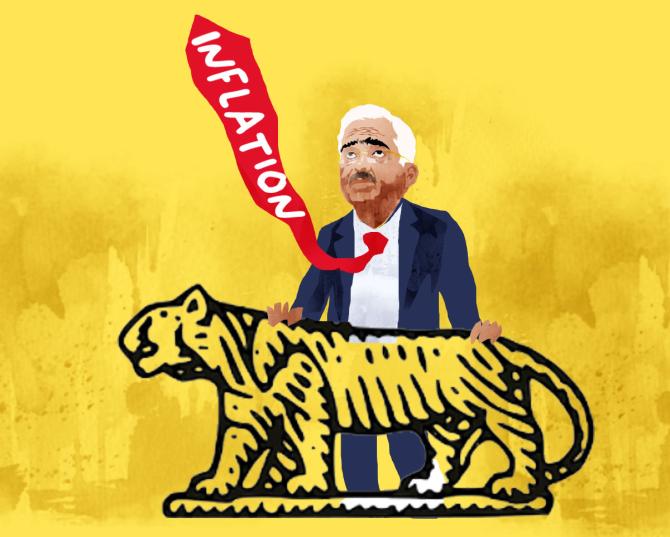India’s inflation is higher than other key developing economies

India’s prices are rising faster than many of its emerging market peers.
The country’s inflation print for May at 4.25 per cent is a marked reduction from the levels seen in May 2022 (7.04 per cent).
However, even though the inflation rate remains within the Reserve Bank of India’s medium-term target of 4 per cent, with a 2 per cent margin on either side, it continues to be higher than China, Russia, and Brazil.
India’s rate hikes have been lower than every other economy under consideration.
Key interest rates across countries were kept at historic lows in 2020 to limit the economic fallout of the Covid-19 pandemic.
The RBI’s monetary policy committee retained the repo rate, the rate of interest at which the central bank lends to commercial banks, at 6.5 per cent last week, which means a cumulative 250 basis point hike since the pandemic lows.
Brazil, on the other hand, has seen a cumulative increase of 1,175 basis points.
The Bank of England increased its interest rates by 440 basis points to 4.5 per cent.
The US Federal Reserve, which has increased interest rates at the fastest pace since the 1980s, is expected to pause its rate hike spree this week when it meets on June 13-14.
It has increased interest rates by 525 basis points to 5.25 per cent, so far.
The European Central Bank, meanwhile, raised rates in the eurozone by 375 basis points compared to its pandemic lows.
Recently, the eurozone entered a technical recession as Germany, Ireland, Greece, and the Netherlands reported a contraction.
The European Central Bank is due to meet this week and take a call on further rate hikes.
In its outlook on inflation, the RBI maintained that the headline inflation is to be shaped by food price dynamics.
China, another key emerging market peer, recorded a 0.2 per cent hike in inflation for the month of May.
China is reportedly expected by some to ease interest rates amid a slowing economy and low inflation.
This would widen the gap in yields with developed countries.
The recent US inflation and jobs data would point to some hawkishness, suggested a June Policy Watch report from the Nomura group, authored by analysts Aichi Amemiya, Jeremy Schwartz, and Jacob Meyer.
They do not expect a hike from the Federal Open Market Committee (FOMC), which decides on monetary policy.
“We expect the FOMC to hold rates at 5.0-5.25 per cent, consistent with dovish commentary from senior Fed officials.
“The near-term dot plot will likely shift higher, with the 2023 median signalling a terminal rate of 5.375 per cent.
“On net, data since the May FOMC meeting has been hawkish,” said the Nomura report.
The trajectory for developed markets is likely to be biased against easing, suggested another June Global Strategy Mid-Year Outlook from the Morgan Stanley group authored by analysts including Andrew Sheets, Serena Tang, Arif Ahmed, Soham Sen and Erika Singh-Cundy.
“We see core inflation still above target at the end of 2024, meaning that the Fed and ECB keep policy restrictive.
“We forecast no Fed or ECB easing this year, and higher real policy rates over the forecast horizon,” it said.
Source: Read Full Article

